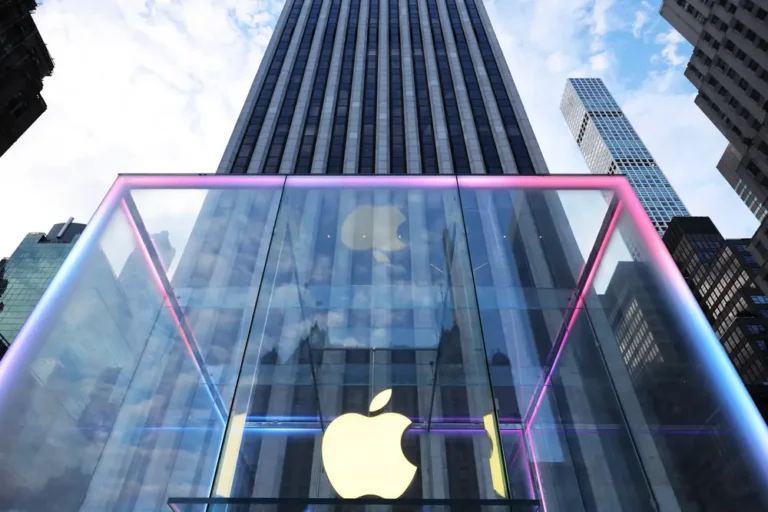Meta is winning the glasses wars

The company’s new Ray-Ban glasses are the closest thing yet to a fully hands-free phone.
Phones drool, glasses rule. That’s the mantra Meta is banking on customers adopting. It starts with updates to the company’s smart Ray-Ban glasses, but those may be just a stepping stone to a future with holographic augmented-reality glasses, where people can have more lifelike video calls, watch TV, or read text messages, all while still seeing the world around them.
On Wednesday, Meta CEO Mark Zuckerberg not only announced that the company was upgrading its smart glasses with new AI features, but he also unveiled a prototype of holographic specs that aren’t yet for sale. These glasses, called Orion, reportedly cost Meta somewhere around $10,000 a pair to make — and they’re the latest flashy attempt to break through in an industry of wearable AR and VR that has yet to catch on.
These wearables have largely flopped and been mocked among the masses. Google Glass set the stage a decade ago and spectacularly failed. It was released before it was ready for prime time — an unfashionable, futuristic camera mounted over the eye that drew ridicule and inevitably weirded people out, thanks to its ability to somewhat surreptitiously record video. Now, despite a rocky start three years ago, Meta’s smart glasses are doing better than expected. That’s a low bar, given how deeply its first generation of the Ray-Ban glasses from 2021 disappointed — selling only about 300,000 pairs, less than 10% of which were still in use last summer. But earning a modicum of cool in what’s been panned as perhaps the dorkiest market in tech is a big leap.
In a July earnings call, Zuckerberg said the second generation of glasses “continue to be a bigger hit sooner than we expected — thanks in part to AI.” People were buying the glasses quicker than the company could make them, he said. The market-intelligence firm International Data Corporation says some 700,000 pairs have been shipped since last October. Meta’s Ray-Bans have a camera and speaker and are packed with AI. Updates give the wearer real-time translation if someone is speaking with them in Spanish, English, French, or Italian, and they also have features for everyday use, like remembering where you parked your car or helping you create an outfit from the clothes in your closet or make a smoothie with the fruits in front of you.
Earning a modicum of cool in what’s been panned as perhaps the dorkiest market in tech is a big leap.
They’re far from being widely adopted, but Meta hopes this will be the next frontier. Glasses are “a very natural computing platform,” Zuckerberg said. The Ray-Bans also have the benefit of being “just good-looking glasses,” he told the crowd during Meta’s Connect 2024 event, and he said “people want to have something on their face that they’re proud of and that looks good.”
That’s important to overcoming the cringe of putting a computer over your eyes. Meta’s loftier goal, the Orion glasses, aren’t quite there. They’re bulkier and way nerdier than a pair of Ray-Bans, very “Dexter’s Laboratory”-coded, even if they’re a more approachable option than other ski-goggle-like headsets and smart glasses. Yet getting people into the Orion glasses may depend on getting people comfortable with smart glasses generally, and that’s where the Ray-Bans could come in. They’re a chance for Meta to stuff its AI into hardware and keep pace in the AI arms race with Apple, Microsoft, and Google — even if customers aren’t rushing to buy AI-stuffed products yet. And the Meta Ray-Bans make it even easier to use AI as you move through the world — no hands (and awkward air-pinching) required.
Still, wearables are a tough industry. The VR and AR headset market has slumped, declining by 54% from early 2022 to 2023, according to data from IDC. The number of VR headsets shipped fell by 4% between 2023 and 2024, according to Counterpoint Research. Despite Apple’s splashy release of its Vision Pro earlier this year, the company is not expected to sell more than 500,000 devices this year (in comparison, some 500,000 iPhones are sold globally every day). Its $3,500 price point is certainly a deterrent to widespread adoption, but so is the feasibility; they’re clunky, there are too few programs made for them, and they’re stuck among a niche user.
VR headsets are “not going to be mass market, ever, in this current form,” says George Jijiashvili, the senior principal analyst of games at the research firm Omdia. But if Meta’s can make AI work in a way that combines video capture, sound, and location context together, the glasses could be a game changer. “If they manage to create an AI solution that actually works very well, then having glasses in that situation makes a lot of sense. You can see the road to mass adoption more clearly with glasses than with VR headsets.”
That’s what Zuckerberg hopes, too. Even though the Orion glasses won’t be sold anytime soon, if ever (Zuckerberg acknowledged they have to become more stylish and affordable), he’s trying to drum up excitement, and, as my colleague Peter Kafka noted, convince the world that he can build the future of computing. “These glasses exist. They are awesome,” Zuckerberg said. “They are a glimpse of a future that I think is going to be pretty exciting.” So far, it’s been hard to convince the average person they need a computer strapped to their face. But a fancy version of the same specs worn by Bob Dylan, Lady Gaga, and countless other celebrities who arguably bring more cool cache than a founder wearing an oversize T-shirt emblazoned with “Either Zuck or nothing” in Latin at a product launch may be the way to start.






